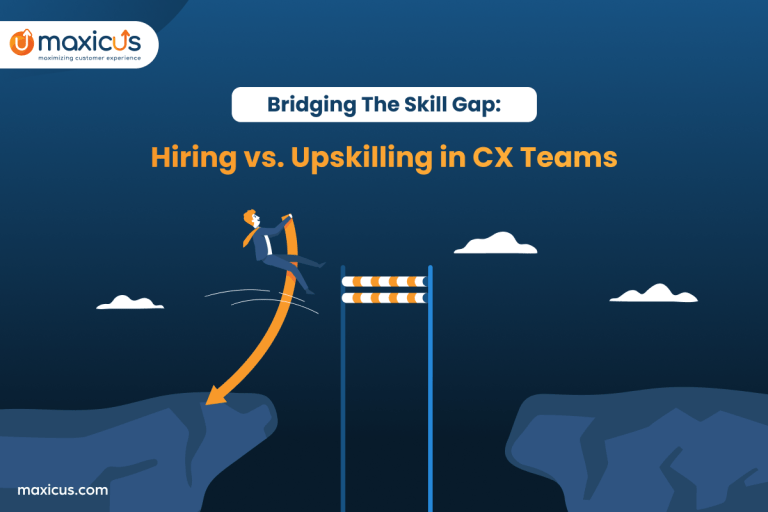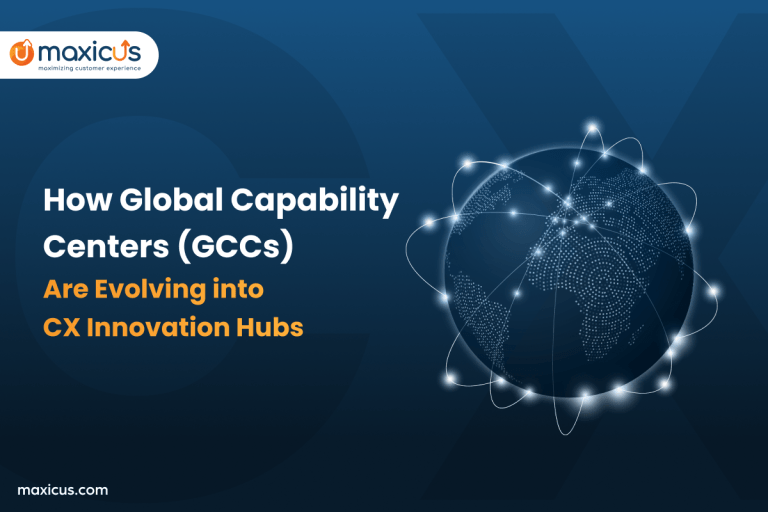5 Call center KPIs that boost your CSAT
KPIs (Key Performance Indicator) is a measured value that describes how effectively a call center is achieving its key business objectives. Call center KPIs are used at multiple levels to evaluate their success in reaching objectives. Call centers need to measure what their agents are doing, how quickly they’re doing it, and how well they’re satisfying customers. The only way is to measure call center agent productivity with reliable KPIs.
What is CSAT?
CSAT stands for Customer Satisfaction, which is a measure of how satisfied customers are with a company’s products, services, and overall experience. It is usually calculated through surveys that ask customers to rate their level of satisfaction on a scale. In the context of Business Process Outsourcing (BPO), CSAT is a crucial metric for assessing the success of outsourcing services. BPO companies often rely on CSAT scores to measure their performance and make necessary improvements to ensure customer satisfaction. By monitoring CSAT in BPO, companies can ensure that their customers are receiving high-quality service, which can lead to increased loyalty, positive reviews, and ultimately, business growth.
Why are call center KPIs important?
Measuring KPIs are extremely useful to your agents, as it focuses on the overall performance of customer satisfaction and on individuals or teams.
According to Gallup’s Re-Engineering Performance Management research, “measurement is a positive pillar for developing employees. It holds them accountable and helps you give good, specific recognition.”
Advanced call centers are mixed apiaries of data, and the task of working through it all to evaluate the effectiveness and efficiency of the agents. As more data is processed, the chance of losing valuable information rises, yet this information is essential for quality measurement and improvement. There are many reasons, of course, but here are a few that stand out:
- To strengthen the agent’s morale.
- Support and influence business goals.
- Foster agent’s personal growth.
- Critical for performance management and evaluation.
Unlock cost savings and elevate customer service with call center outsourcing
5 Call center KPIs that boost your CSAT
Calculating call center KPIs that are associated with CSAT, agent effectiveness, and efficiency should be the main objective of any call center seeking to optimize its performance. Here are five call center KPIs that help to serve better to your customers.
First Call Resolution (FCR)
FCR is another KPI that is directly related to CSAT and it is easy to see the reason. It is the percentage of calls in that the agent completely addresses the customer’s needs without having to transfer, escalate, or call back. Solving an issue on the first contact is so important, that is why FCR is the single most important KPI related to customer satisfaction. Therefore it is at the top of the list of call center KPIs to track over time.
Average Abandonment Rate
Call abandonment, or the percentage of callers who hang up before reaching an operator, is a common phenomenon in contact centers and has a disturbing impact on customer retention. Also, it has a large impact on the CSAT percentage. Even one blocked call is a missed opportunity to connect with the customer or prospect. This is a KPI that call centers should never ignore. Therefore call center leaders must keep track of this KPI and make sure that it remains low.
Average Time in Queue
No one wants to wait in line for a long period. Thus, to ensure your customer’s wait time is within an acceptable range and CSAT is as well, you must keep track of the Average time in the queue. This KPI is calculated as the total time callers wait in call queues divided by the total number of calls answered by agents. It is a great pointer of whether or not your agents are providing customers with the service they aspire.
Average Speed of Answer
The average Speed of Answer is evaluated as the average time it takes for calls to be answered in the contact center during a specific time. Though, it doesn’t include the time that takes to navigate through the IVR. It is a call center KPI typically dedicated to measuring efficiency and the degree of accessibility to their customers.
Average Handle Time
Average handle time is described as the elapsed time from when an agent answers the call until the customer hangs up. In the call center industry, it is the most commonly examined KPI, as it is directly related to CSAT.
What is the industry benchmark for Call Center KPIs?
Average Abandonment Rate – 12%
67% of customers hang up the phone because they are frustrated they can’t talk to a real person.
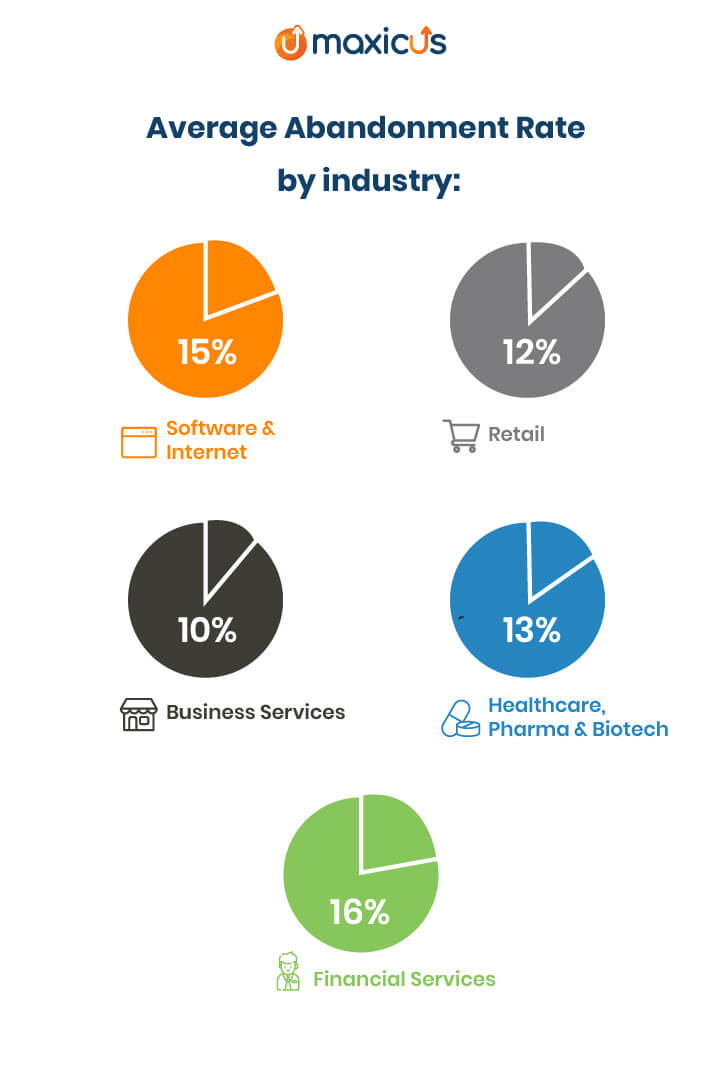
Average Time in Queue – 3.4sec
75% of customers say it takes too long to reach a live agent. (Source) Today customers live in a world where every second is money, so the shorter the wait, the better the CSAT score.
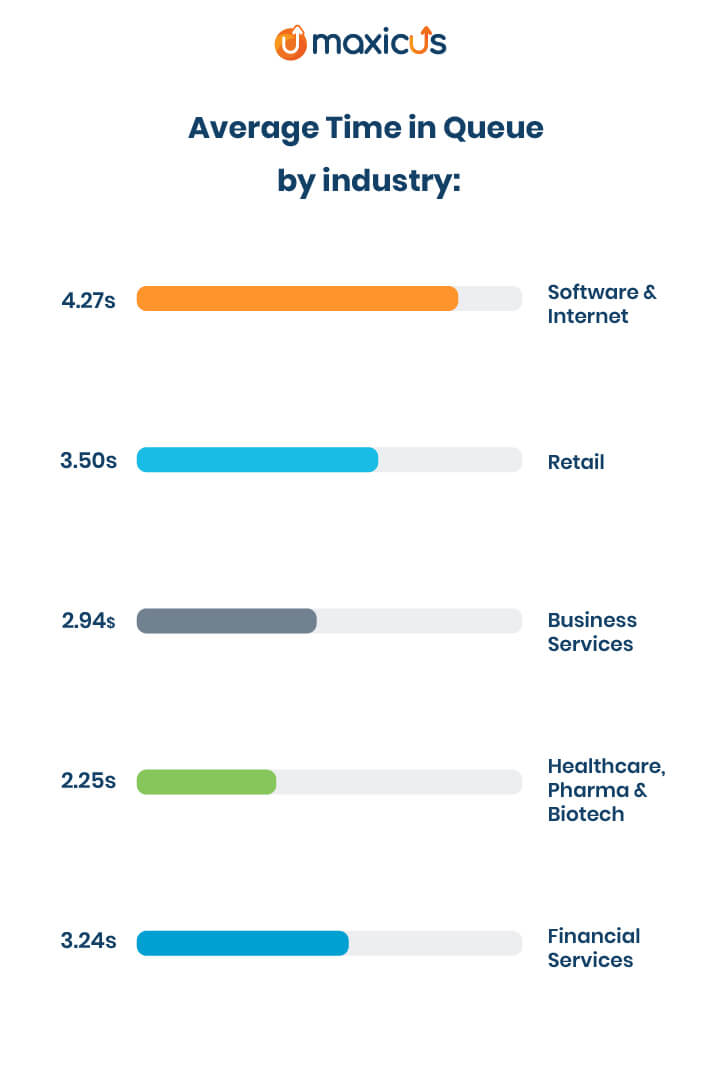
Average Speed to Answer – 4.3sec
Nearly 60% of consumers are not willing to wait on hold for customer service for more than one minute. (Source) When customers reach out to customer support because they are facing issues with the product or service that needs quick resolution. Never keep them on hold.
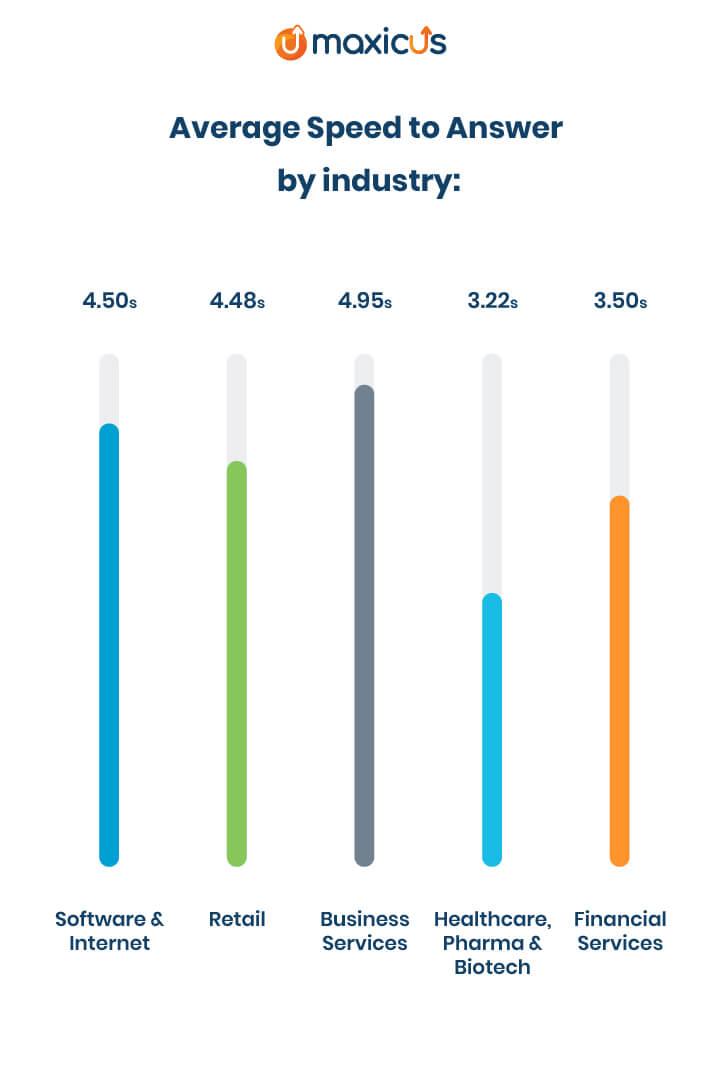
First Call Resolution – 70-75%
There are various ways to regulate FCR, and percentages will likely change depending on the method. Also, as soon as there is a little variation in channel mix, the method becomes even more challenging to compare as there are wholly new factors to think about. A system-based approach would produce accurate results, while call centers can also use call transfer and callback data to assess their FCR. However, this approach has limitations.
AHT – 6.3sec
Average Handling Time is a KPI that impacts several critical call center KPIs across CSAT, operational efficiency, and agent effectiveness. According to research, 51% of customers will never do business with a company again after just one poor service experience. It’s a defining KPI in understanding and improving the customer experience(CX).
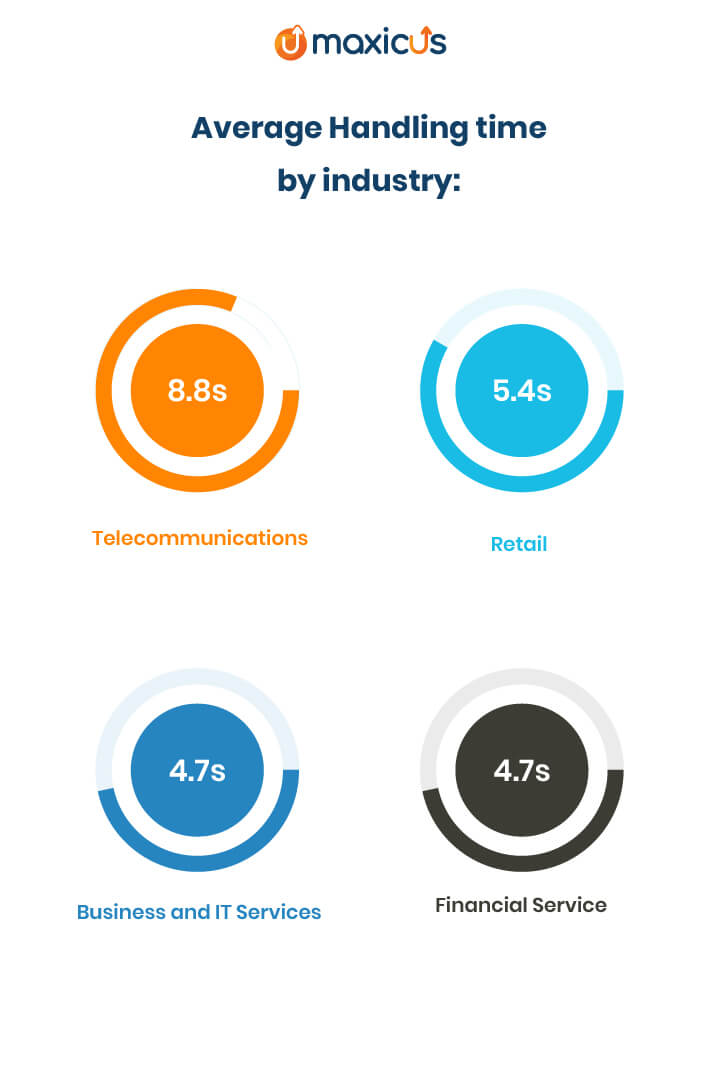
How to meet industry benchmarks?
How to enhance FCR?
A firm FCR not only shows that the call center provides exceptional service, but it also confirms that your customers are getting resolution fast, which improves overall customer satisfaction. Let’s see how to increase your FCR rate in no time.
- Create an educational knowledge base center.
- Keep the process fast and easy which requires minimal customer effort.
- Listen to the customer carefully, get clear on the issue, and be precise.
- Anticipate customer needs.
How to decrease the Average Abandonment Rate?
The more successful the contact center is, the more calls you get. It simply means, you are more likely to handle increased hold times and, in crisis, an increased abandoned rate. Here are some ideas on how to improve the abandonment rate in your call center.
- Adjust schedules and hire more agents.
- Use multiple but omnichannel support.
- Offer customer callbacks.
- Create a better queuing experience.
How to reduce the Average time in Queue?
Average time in Queue is directly linked with call abandonment rates. This describes how often customers lose hope and hang up the phone before conversing with a call center agent. There are few methods for improving this call center KPI.
- Optimize your call queue configuration and call queue settings & features.
- Offer queue callback.
- Use customer voicemail.
- Maximum queue size.
How to optimize the Average Speed of the Answer?
This KPI can hugely impact your business in terms of CX. Here are a few tips to optimize the Average Speed of Answer.
- Consider Re-Training of agents.
- Schedule your agents wisely based on call trends, history, and foreseeable busy periods.
- Use Call Routing Tools.
How to improve AHT?
Find out the ways to improve AHT in your call center.
- Automate simpler queries to reduce the general workload.
- Acknowledge, Understand, and answer- the systematic focused approach.
- Focus on reducing after-call work (ACW) instead of customer talk time.
- Aim provides resolution in every customer query on the first contact.
How knowledge management software and omnichannel support can improve your KPI scores?
The success of the call center is predicated on its operational infrastructure. Call center solutions such as; knowledge management software and omnichannel support have one goal – to improve call center KPIs in effort to produce efficient results. Let’s find out how.
Knowledge management software:
In a busy call center or with remote workforces, agents can’t put customers on hold and get immediate help from a supervisor to resolve complex customer queries. Using machine learning, natural language processing, and semantic search that recognizes keywords related to customer issues and quickly empowers support agents with relevant knowledge articles.
This decreases the effort in findability of data, hence it is reducing agent error at call centers and making sure key call center KPIs are achieved. A knowledge management software helps to find the appropriate information which makes it simpler for call center agents, while ease to customers helps in achieving overall CSAT & NPS scores.
Omnichannel support:
Omnichannel support improves agent efficiency, the major advantage to call centers. which ultimately has a spiraling effect on other key KPIs, such as CSAT score, customer retention. Everyone involved in the call center will be on the same page over this. You get full details of the customer the moment they connect with your brand, from their Names to their possible needs. Thus, Customer service agents reduce AHT and increase FCR. Marketing teams know where to join with customers, Sales teams understand what to say at key moments of truth, and Product teams identify which features are creating the most loyalty or frustration.
Setting standards
KPIs in the workplace is incredibly helpful. These set a score using data, to help to understand business operations. Also allows for establishing targets and tracking them. KPIs build feedback channels, provide employees with clarity in their job and most importantly motivate them.
“Customers are smarter than ever, as they understand what good – even great – customer service looks and feels like. They no longer compare you to a competitor, but to the best experience, they have had with anyone. Brands that deliver an excellent service experience set the bar higher for everyone.”
Shep Hyken, Customer service, and experience expert.
Customers are raising expectations for quality service. Benchmark data for your call center, then managing to improve against those KPIs, is significant in serving customers better. Also, it’s essential to know the competition in mind when looking at the call center KPIs along with industry standards. Comparing with your rivals in the market gives you a template to craft new targets for your business. KPIs in your call center help you set guidelines for each agent’s performance. Improve overall agent and CX by setting consistent victories. Use the industry standards as a rubric to map out your call center success.







